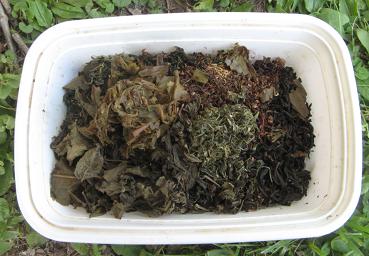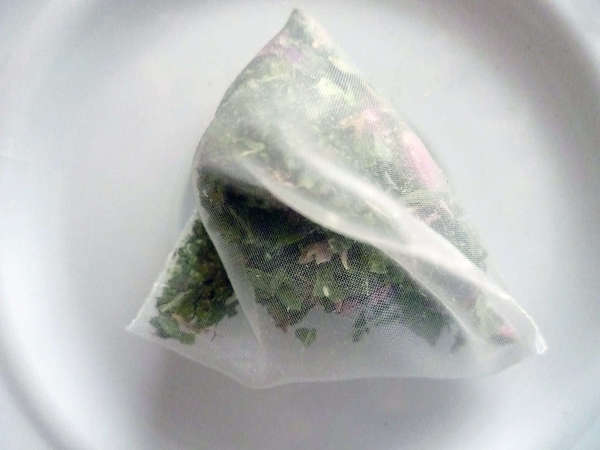Composting Tea Leaves and Tea Bags
Wikipedia: CompostLast Updated: Oct. 31, 2013

Tea leaf compost
Used tea leaves are nutrient rich; disposing of them in the trash is throwing out a valuable resource. Tea leaves have a high nitrogen content, and also contain phosphorus, potassium, and various trace minerals, all of which are needed by plants. Adding your used tea leaves to compost or applying them directly to your garden puts these resources to use, and reduces your need to rely on other fertilizers.
Composting loose-leaf tea is much easier, but the contents of teabags can also be broken open and composted in the same way. The bags themselves may or may not be compostable, as explained below.
Tea leaves are suitable for direct application as mulch
Unlike most kitchen waste which generally needs to be composted before application to soil, tea leaves can be applied directly to the soil. Broken-leaf tea makes a fine mulch that breaks down quickly and mixes readily with soil, whereas whole leaf tea has a coarser texture like fine leaf litter, still finer than most mulch. Different textures of tea leaf can be freely mixed and used as mulch.Tea leaf mulch tends to hold water well like other leaf mulch. It is useful for covering exposed areas of soil, preventing the soil from drying out. Like other leaf mulch, however, tea leaf mulch can hold too much moisture in, and is not suitable for application around plants in damp areas that need drier conditions and well-drained soil. If your garden has wet or poorly-drained conditions, consider composting the leaves first.
Composting tea bags: many tea bags are not biodegradable
 Many pyramid sachets like the one pictured here are made of nylon, which is not biodegradable in the same time-scales in which paper tea bags will break down completely. Photo © Rosmarie Voegtli (Flickr), CC BY 2.0.
Many pyramid sachets like the one pictured here are made of nylon, which is not biodegradable in the same time-scales in which paper tea bags will break down completely. Photo © Rosmarie Voegtli (Flickr), CC BY 2.0.A useful trick for dealing with tea bags is to let the teabags dry out overnight; the bags can then be quickly and easily broken open; their contents separate more easily from the walls of the teabag when dry.
Composting packaging materials
In general, it is not safe to assume that packaging is biodegradable or compostable (or that it is not) based on how it looks. Some companies, such as Arbor Teas, use fully compostable packaging. Some materials that look like they are made of paper and cardboard can contain plastics, coatings, or other chemical additives that are not biodegradable and will not break down if added to compost. On the other hand, other materials, such as packing peanuts made from corn starch, and certain plastics, may look like other non-biodegradable materials, but may be fully biodegradable. Always check with the company providing the packaging before deciding whether to compost material or throw it out. Most companies with compostable packaging will announce it.Be cautious about packaging labelled as biodegradable. Packaging that is biodegradable is not necessarily compostable in a traditional sense: it may break down more slowly than the rest of the items in your compost. This is particularly true of biodegradable nylon.
References:
Deborah L. Martin, Grace Gershuny, The Rodale book of composting, Rodale, 1992.

